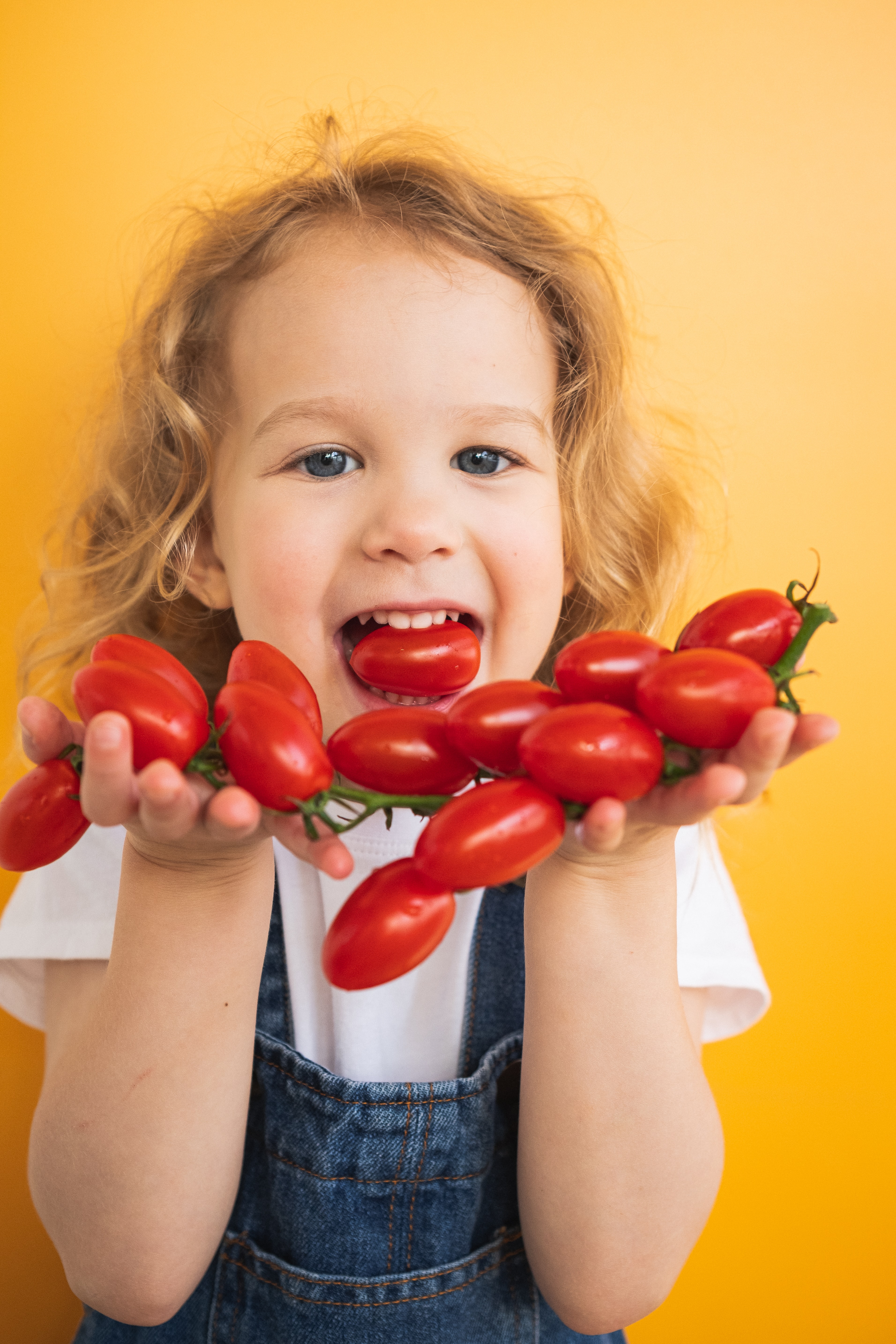If you're looking to add more nutritious meals to your child's diet, you may want to consider plant-based foods (food entirely derived from plant sources). But how do you get your picky eater to try something new and ensure they are getting a balanced diet? This blog provides some tips on how to introduce plant-based foods to children in a way that they'll be more likely to accept.

When it comes to feeding our children, we want to make sure they're getting all the nutrients they need to grow up healthy and strong. One way to do this is by introducing them to plant-based foods.
Plant-based foods are packed with vitamins, minerals, and other nutrients that are essential for good health. They're also a great way to get kids to eat more fruits and vegetables.
There are many benefits of eating plant-based foods, including:
1. improved overall health
2. increased intake of important nutrients
3. better digestion
4. improved blood sugar control
5. lower risk of obesity and chronic diseases
In 2021, a study published in the American Journal of Clinical Nutrition found that vegan kids in comparison to their omnivore peers were leaner and had better markers of cardiovascular risk, such as lower blood cholesterol, which could contribute to their lowering of heart disease later in life.

Meal preparation is crucial to ensure your children receive the key nutrients such as iron, zinc, iodine, omega-3s, calcium, Vitamin D, and B12 (which is naturally lacking plant foods). Luckily, there are a variety of plant-based foods and vegan supplements for you to choose from.
If you're looking for ways to improve your child's diet, introduce them to plant-based foods today! Overall, plant-based diets are completely safe for all stages of the lifecycle including children and adolescents.
There are many benefits to eating a plant-based diet, including improved health and decreased environmental impact. If you're interested in transitioning your family to a more plant-based diet but aren't sure where to start, this blog post is for you!

When it comes to introducing children to new foods, it's important to keep a few things in mind. First of all, take it slow. You don't want to overwhelm them with too many changes all at once. Start by incorporating one or two new plant-based meals into your weekly rotation.
Another important consideration is making sure that the meals you serve are still nutritious and balanced. Just because you're avoiding meat and dairy doesn't mean that your kids will be missing out on important nutrients. In fact, there are plenty of plant-based foods that are rich in protein, calcium, and other essential nutrients.
Finally, don't forget that kids are more likely to eat foods that they help prepare. Involve them in meal planning and cooking whenever possible. By getting them involved in the process, they'll be more likely to try (and enjoy!) the final product.

If you're looking to introduce your children to plan-based eating, we've got some great recipes for you! From kid-friendly breakfasts to tasty snacks and satisfying dinners, we've got all the bases covered. And since all of our recipes are made with wholesome, nutrient-rich ingredients, you can feel good about feeding them to your family. So what are you waiting for? Get cooking!
1. Banana Pancakes: Start the day off right with a stack of these fluffy banana pancakes. Top with fresh berries and a drizzle of maple syrup for a truly delicious breakfast.
2. Overnight oats: Overnight oats are a great way to fuel up in the morning. Simply mix oats, milk, yogurt, and your favorite fruit together the night before and let them sit in the fridge overnight. In the morning, give them a good stir and enjoy!
3. Egg muffins: These egg muffins are perfect for on-the-go mornings. Make them ahead of time and reheat as needed throughout the week.
4. Breakfast burritos: Breakfast burritos are always a hit in our house! Fill them with scrambled eggs, cheese, and your favorite veggies for a well-rounded meal.
1. Trail mix: This homemade trail mix is packed with nutritious ingredients like nuts, seeds, dried fruit, and dark chocolate chips. It's perfect for an on-the-go snack or after-school treat!
2. Veggie sticks: Cut up some veggies and pack them alongside a dip or hummus for a healthy and satisfying snack.
3. Fruit salad: This fruit salad is a refreshing and healthy snack option. It's perfect for summertime or anytime you're craving something sweet!
4. Popcorn: Popcorn is a great whole-grain snack. Make it even healthier by popping it in the air popper and avoiding the added butter and salt.
5. Arlene® Siew Mai is a tasty snack and is already ready-made! Just thaw and put it in the microwave or steamer. In just 2 minutes, your kids can enjoy this traditional snack while watching TV.
1. Spaghetti and meatballs: This classic dish is always a hit with the kids! Serve it with a side of steamed veggies for a well-rounded meal. Try Arlene's Bolognese with Spaghetti, the noodles are made of durum wheat while the sauce is a blend of vegetables and herbs.
2. Chicken nuggets: These homemade chicken nuggets are a healthier alternative to the ones you'd find at a fast food restaurant. Serve them with some oven-roasted potatoes or roasted veggies for a complete meal.
3. Macaroni and cheese: This macaroni and cheese recipe is made with whole wheat pasta and plenty of cheesy goodness. Serve it with a side of steamed broccoli for a well-rounded dinner.
4. Vegan Pizza: Everyone loves pizza! Make your own at home using whole wheat dough, low-sugar tomato sauce, and plenty of veggies. Try this Vegan mini pizza recipe.
Introducing plant-based food to children can be a challenge, but it's definitely doable with a little bit of creativity and patience. Hopefully, these tips have helped give you some ideas on how to go about it. Remember, every child is different so what works for one might not work for another. Just keep trying different things until you find something that sticks. Good luck!